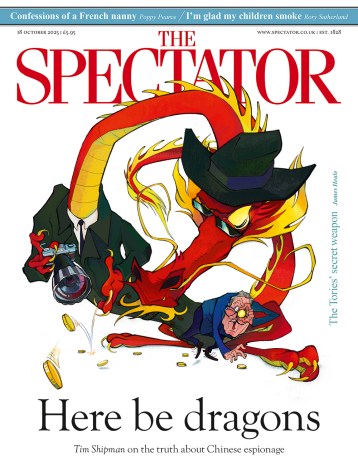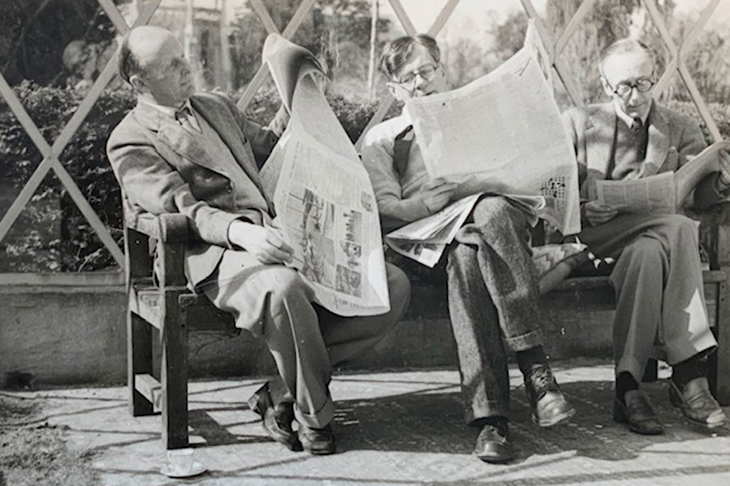In the spring of 1945 three men pooled their resources in order to buy Long Crichel House, a former rectory built during the reign of Queen Anne in a secluded Dorset village. Desmond Shawe-Taylor and Edward Sackville-West were highly influential music critics, while Eardley Knollys, a former gallery owner, was now assistant secretary to the National Trust and a painter. The idea was for the three friends to live communally but each have their own parts of the house where they could work undisturbed and enjoy some privacy. The house was in fact large enough to accommodate not only a live-in butler and cook-housekeeper but, from 1949, a fourth partner, Raymond Mortimer, the leading literary and art critic of the day. All four men were gay, with a wide circle of friends in the worlds of writing, art and music, and Long Crichel swiftly became a popular retreat for many of the leading figures in these fields.
For Patrick Leigh Fermor the house was ‘a sort of Mecca’, its owners ‘all working hard, as in a lay monastery, except for the delicious food and funny conversation’. Inevitably, the atmosphere was not always as harmonious as this suggests, and over the years some of the personnel changed. The melancholy Sackville-West acquired a house in Ireland and moved there more or less permanently, dying in 1965. The following year, a disillusioned Knollys relinquished his share in the house, which was taken over by the distinguished ophthalmologist Pat Trevor-Roper, and when Mortimer died in 1980 the painter Derek Hill came to live at Crichel as a lodger.
None of the Boys slept with each other, though their complicated sex lives provide some lively material
There are obvious parallels here with the Bloomsbury Group, who conducted similar experiments in communal living. The principal difference is that none of the Crichel Boys slept with each other, though their complicated and contrasting sex lives provide Simon Fenwick with some of his liveliest material. Mortimer had a permanent partner in the architect Paul Hyslop, with whom he shared another house in Canonbury. By contrast, Sackville-West, who had converted to Roman Catholicism and was never at ease with his sexuality, specialised in agonisingly unrequited love, falling for (among others) Benjamin Britten and the sadistic, married Conservative MP Paul Latham, who during the war was imprisoned for homosexual offences with three gunners. Knollys had lost the man he had envisaged spending his life with in an air raid, but subsequently fell in love with Mattei Radev, a talented Bulgarian picture-framer whom he was for a while obliged to share with E.M. Forster. The most sexually carefree of the quartet appears to have been Shawe-Taylor, who, cheerfully promiscuous, attracted partners by offering troopers’ breeches for sale in the columns of Exchange & Mart.
Although both Sackville-West and Hill have had books written about them, it is hard to imagine anyone today commissioning individual biographies of the other Crichel Boys. These lives are well worth recording, however, and a book centred on the house that they shared and the circles in which they moved seems the perfectsolution. Group biography is a tricky undertaking, but while his chronology is sometimes muddled, Fenwick generally manages to marshal these several lives into a coherent and often very entertaining narrative. He not only writes about the house’s inhabitants, but along the way provides brief biographies of its most regular guests, among them James Lees-Milne and Frances Partridge, who both wrote extensively about Crichel in their published diaries, E.M. Forster, Elizabeth Bowen, Rose Macaulay and, from a younger generation, the television producer Julian Jebb and the children’s publisher Sebastian Walker.
Less successful is the attempt to use Crichel as a prism through which to view a number of events and causes in the wider world. Given that all the Boys were homosexual, and Trevor-Roper was among those who gave evidence to the Wolfenden Committee, an account (not always accurate) of its proceedings seems fair enough. The same cannot truthfully be said of a long chapter on the trial of Lord Montagu, while an even less explicable digression is the detailed account of a case in which a local land-owner was pitched against unscrupulous government officials in an attempt to reclaim land that had been compulsorily purchased during the war. This is not uninteresting, but Fenwick’s unsubstantiated assertion that the Boys ‘would undoubtedly have known about and taken an interest in the scandal unfolding on their doorstep’ hardly justifies devoting an entire chapter to it.
By contrast, it seems wholly appropriate that a book focusing on a historical house should contain a good deal of material about the National Trust, where Knollys worked alongside Lees-Milne, his closest friend and confidante. Indeed, the preservation of old houses, a cause with which many of the leading characters were involved one way or another, is skilfully used as a running theme in a book that, with a fine balance between nostalgia and clear-sightedness, commemorates a privileged world long since vanished.






Comments